Unravelling the mystery of a slave boy sold to a Scotsman
- Published
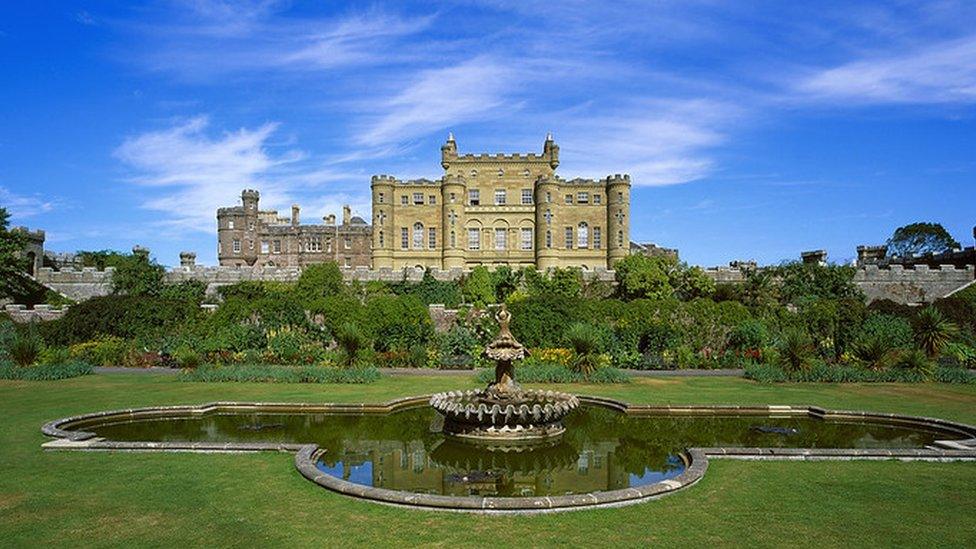
Culzean Castle, which sits on the Ayrshire Coast, has played host to celebrities and presidents
Culzean Castle has played host to many important people, including presidents and film stars.
President Dwight Eisenhower stayed there four times, once as president when he described it as his "Scottish White House".
Actor Jimmy Logan had a wing of the castle in the 1960s, along with a Rolls Royce and a private plane, all of which he had to sell to pay for his failing theatre.
But it's an earlier resident of Culzean who brought academics, artists and curators together this week.
Scipio Kennedy was born in 1694 in Guinea, West Africa.
He was taken from his home and sold to a Scotsman, Captain Andrew Douglas, when he was just six years old.
Douglas brought him to Scotland in 1710 and when his daughter Jean married John Kennedy, he moved with them to their new home at Culzean Castle, on the Ayrshire coast.
But while the portraits, objects and artefacts tell the family story, there is little to flesh out Scipio's life.
"I think as historians we've been very guilty of looking at our history in Scotland from a Scottish view point and very much from a patriarchal view point," says Dr Jennifer Melville of the National Trust for Scotland.
The academic led the Facing Our Past study in 2021 which found at least 50 properties had direct links to slavery.
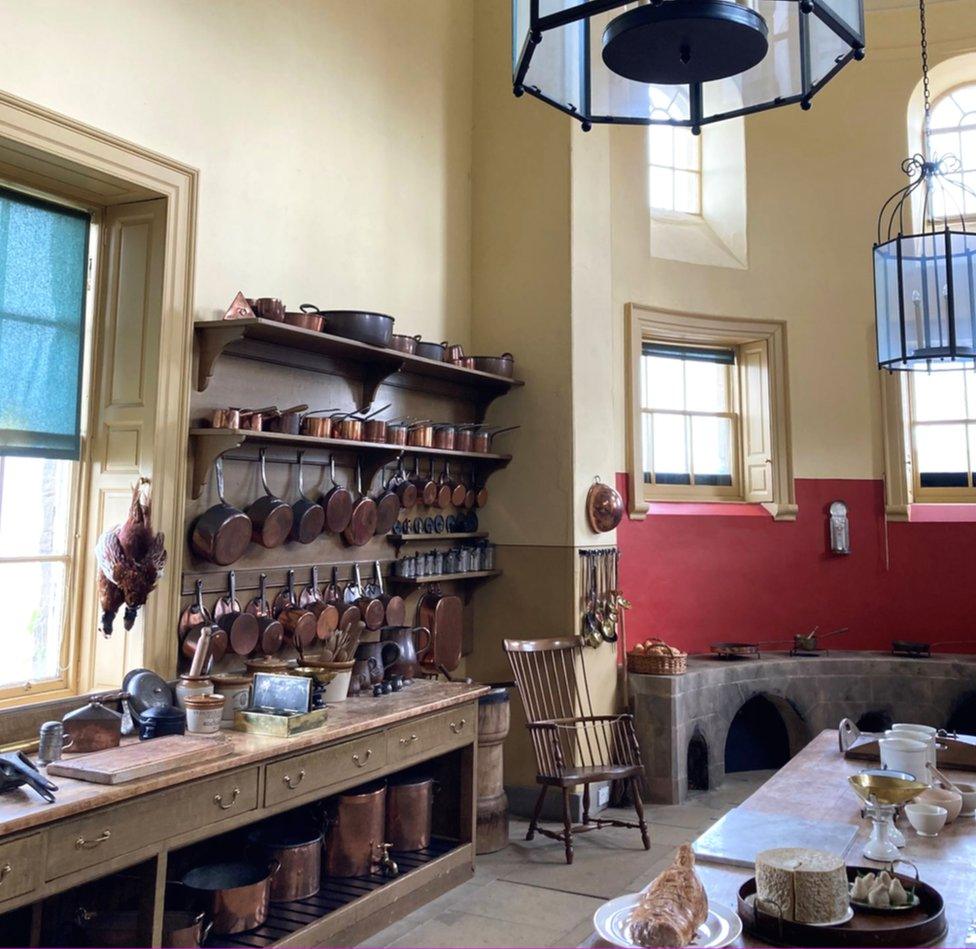
Scipio is believed to have worked in the kitchen at Culzean Castle
"So often I'll go round a house and I'll hear about what the man did, when in fact it was very often the woman.
"We have one castle where it was a lesbian couple running the estate throughout the 18th century so those are the stories I'm keen to uncover to find the truths of our wider and, if we're honest, much more interesting history."
There are a number of key documents relating to Scipio and his Manumission document, which released him from slavery at the age of 28, is contained in the National Records.
A plan of the estate in the 1700s shows the location of the house where Scipio and his family lived.
His gravestone is a few miles from the castle in Kirkoswald but there a few clues about his early life.
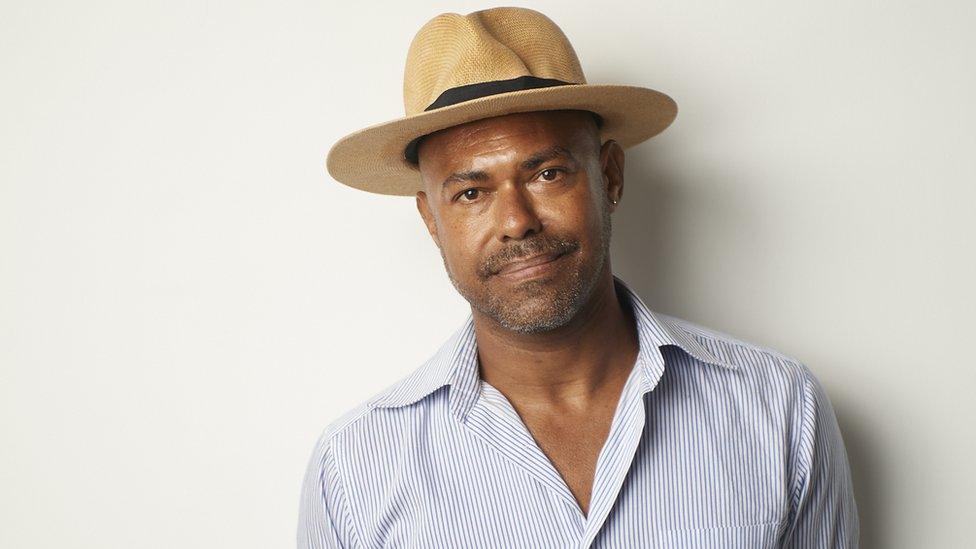
Artist, Billy Gerard Frank has used Scipio's life as inspiration for his latest artwork
"We know more about Scipio than we do about tens of thousands of other children trafficked in similar circumstances but we still don't even know his real name," says Dr Christine White, lecturer in global history at the University of Glasgow.
"For example, when I tried to find out where exactly in Africa Scipio came from, there were so many hundreds of British and European slave ships transporting people from Africa, that there were just tens of thousands of possibilities.
"All we can do is try and pull together pieces from places and times and different stories and think creatively about what that biography might have looked like."
Billy Gerard Frank is a Grenada born, New York-based artist who has been commissioned by the National Trust for Scotland to make a work exploring Scipio's life.
For the past week, he's immersed himself in the landscape around Culzean, even swimming in the sea, while looking for clues about his life.
It is artistic detective work which he has done before. His film Palimpsest explored the life of Quobna Ottobah Cugoana, who was brought to England by a Scottish plantation owner and went on to play a seminal role in the abolition of slavery.
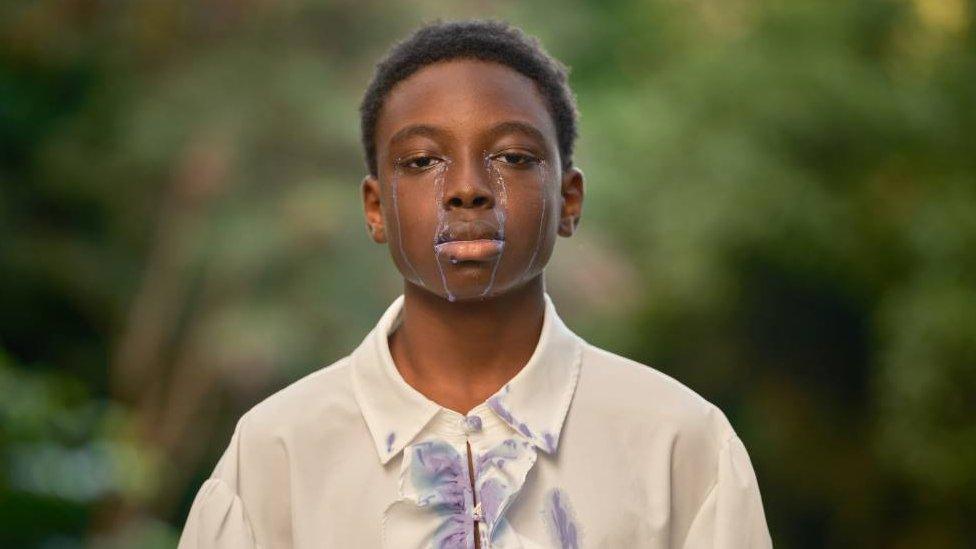
Mr Frank previously explored the life of Quobna Ottobah Cugoana, a boy who was brought to England by a Scottish plantation owner
"With Scipio, we're talking about long before slavery was abolished," he says.
"When he lived here, he would have been the only black man in the area and I wonder what that would have been like.
"I'm also very intrigued by the fact he was made to stand outside the church, every week, having admitted fornication and getting a woman pregnant."
It's also thought that Scipio and the Kennedy family were involved in smuggling, using the network of caves beneath Culzean.
Yet Scipio was also a respected member of the Kennedy household.
'Well respected'
Mr Frank said: "This is one of the most prominent families in the area.
"He had the family name, they left him the same amount of money in their will as the grandchildren, he had a significant piece of property on the land and he was very much involved in the culture of the area, taking weaving to the market.
"He would have been very well respected."
Scipio went on to marry Margaret and they had seven more children together.
Among his known descendants are the Jardine Sisters, who are believed to be the earliest known mixed heritage women to study at Glasgow School of Art.
And Dr Caroline Palmer, an academic based in Wales, who discovered six years ago that she too is a descendant of Scipio.

Dr Caroline Palmer discovered she was a descendant of Scipio Kennedy
"A trunk arrived at that time, full of letters my great grandparents had written to each other, including a family tree which showed that we could trace back to Scipio and Margaret and their children.
"I'm very proud of the connection. I can't claim the level of connection that other descendants can. A DNA test showed no obvious connection, which was disappointing, but given there are about 255 people contributing to my genetic makeup, that's hardly surprising.
"I'm convinced that he is part of my ancestry and I'm very proud of that."
There's no portrait of Scipio Kennedy at Culzean. In fact there's only one portrait of a mixed race person in the entire collections of the National Trust for Scotland.
It's a painting by Sir Henry Raeburn of Margaret Bruce and it hangs in the property at Hill of Tarvit.
And in the midst of the mahogany and porcelain, there's only one object which was actually made in Africa or the West Indies. A small punch bowl made in St Kitts, which is now on display in the Georgian House in Edinburgh.
But there is evidence of Scipio on a wall outside the kitchen.
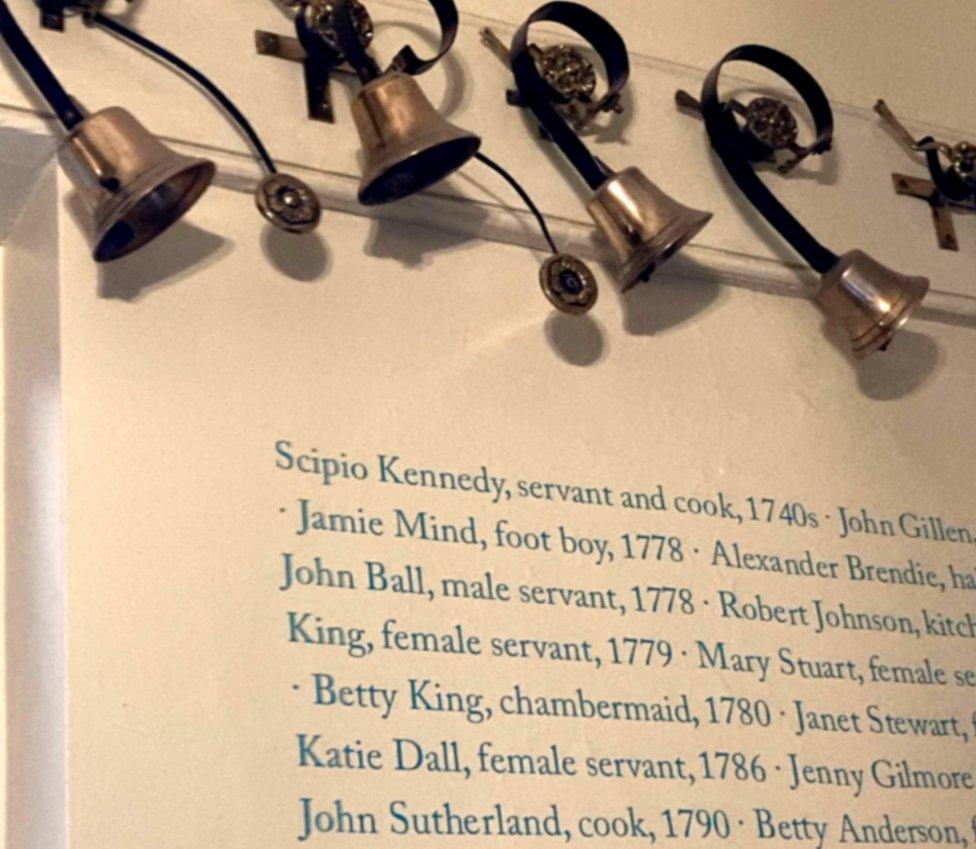
The only commemoration of Scipio Kennedy visible at Culzean Castle is on the wall outside the kitchen
"The parapet runs between the quarters where people lived and worked and the castle itself," says Dr Melville.
"It looks across the sea, but it protects people arriving in carriages seeing all the work going on. It's a demarcation of class which nowadays is seen as somewhat unsavoury."
She agrees it at least it gives visitors some sense of who Scipio was.
Dr Melville adds: "For me, when I come to Culzean, I feel his presence very strongly.
"An old property like this couldn't survive with just one wealthy family.
"They were hundreds of people working here and it's those stories I'm keen to uncover."
Related topics
- Published1 September 2018
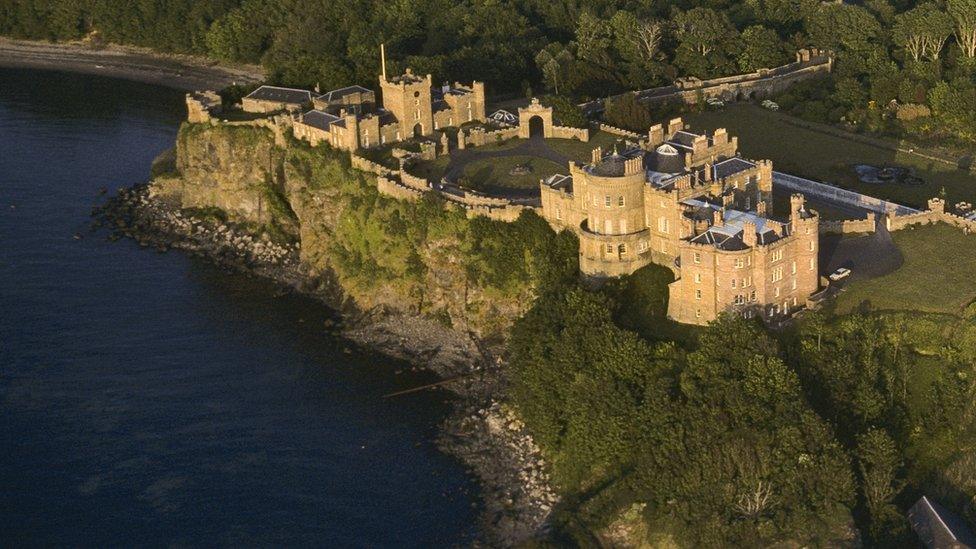
- Published3 May 2017
